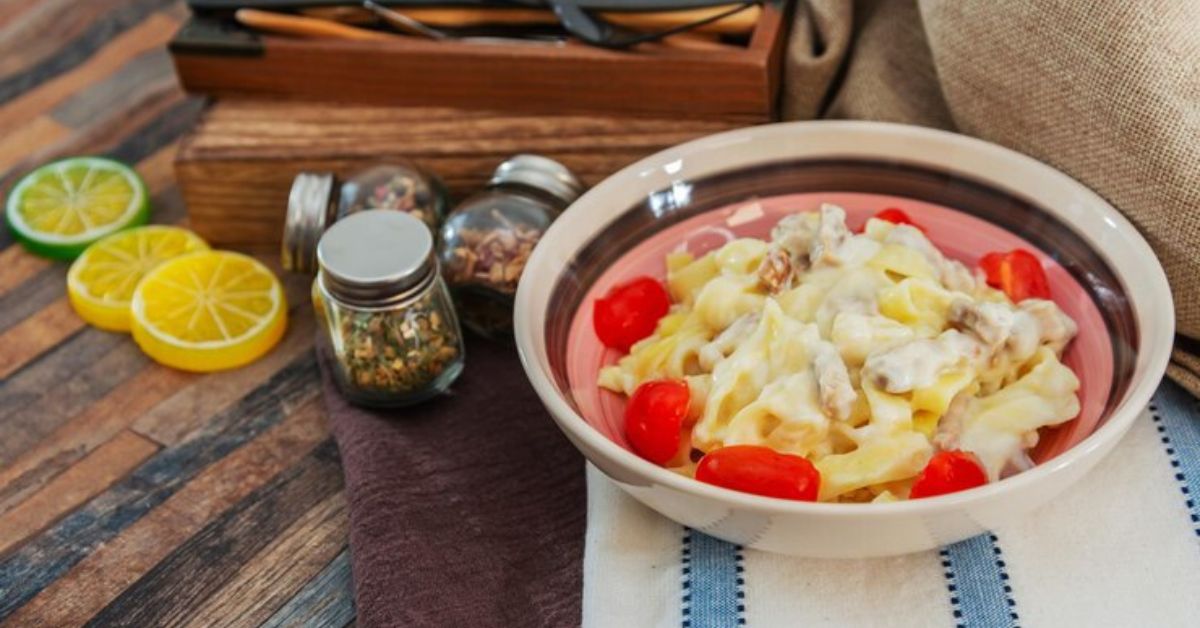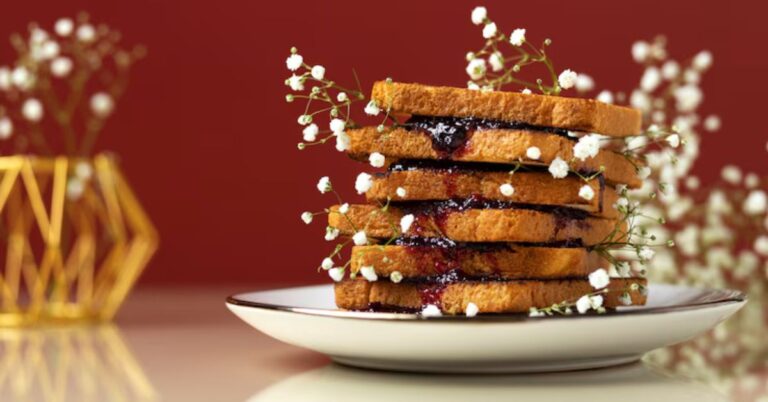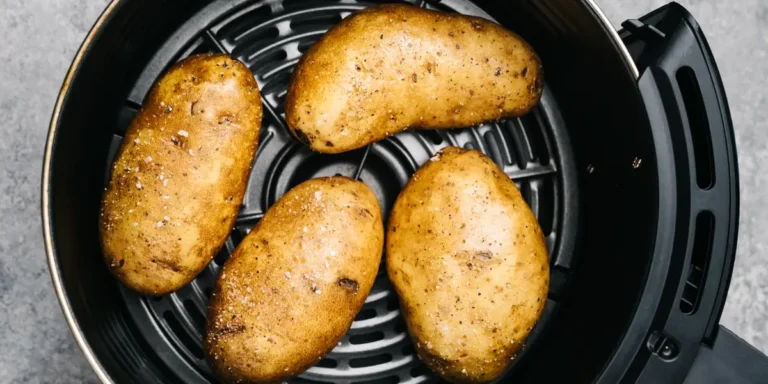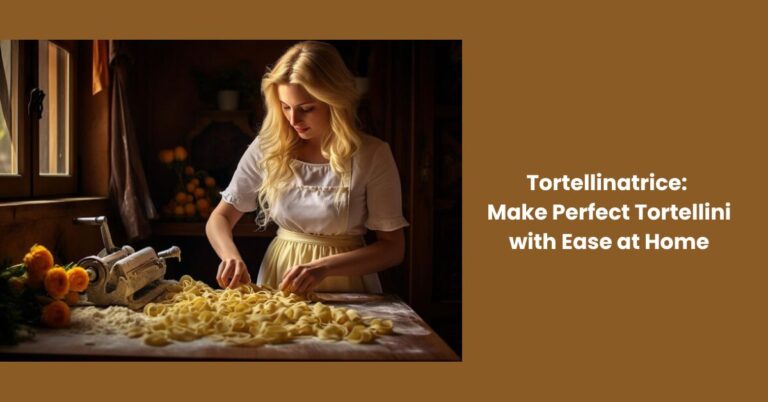Delicious Mannacote Recipe & Origins – Discover the Italian Classic

If you’re looking for a dish that will bring you comfort, go no further than Mannacote, sometimes called manicotti. Every mouthful of this mouthwatering Italian dish is a celebration of the perfect harmony between the delicate pasta, the rich contents, and the savory sauces. No matter if you’re hosting a dinner party or just want to relax at home, Mannacote will make you feel happy and nostalgic. Delve into the rich history of this classic meal and learn why it has been passed down through the years with tales as delicious as its culinary merits.
Get ready to roll up your sleeves; we’re about to embark on an appetizing journey!
TRENDING Toastul Recipes – Creative Toast Ideas for Every Meal
What is mannacote?
Delicious and comforting, mannacote (also called manicotti in the food industry) is an Italian classic. This type of pasta is ideal for stuffing with hearty ingredients because of its big, tubular form.
Fillings for mannacote often include ricotta cheese, herbs, spinach, or even meat. The next step is to coat each tube with flavorful marinara sauce and bake them until they’re done.
The secret is in how versatile it is, as much as in its flavor. You may make it taste exactly as you want it to by adding veggies for more nutrients or changing up the cheese blend.
Mannacote captures the spirit of home-cooked Italian cuisine, whether it’s served at a family gathering or a special event. The dish is more than simply food; it’s an invitation to share a comforting hug with each bite.
The History and Origins of Mannacote
The Italian culinary traditions are the foundation of mannacote, often called manicotti. It all started in the southern parts of Italy, more specifically in the areas around Sicily and Naples.
The literal translation of the word “manicotti” is “little sleeves,” which perfectly captures the form of the stuffing-ready tubular pasta. These pasta tubes, which are typically prepared with flour and water, are ideal for encasing hearty contents.
Originally, this meal was made to make use of any excess foods that were lying about. Before baking them in marinara sauce, families would stuff the fragile shells with delicious concoctions like ricotta cheese.
In the late 19th century, mannacote became a popular comfort dish in American homes thanks to the influx of Italian immigrants who brought their recipes to the United States. An classic dish that many still love today, it took on a new flavor profile as each area contributed its own spin.
Traditional Ingredients Used in Mannacote
The traditional components that give depth and taste to mannacote, also known as manicotti, are the ones that make it thrive. The pasta takes center stage; its distinctive ridged tubes are produced with eggs and durum wheat flour.
A creamy filling sits inside these lovely shells. Traditional recipes call for ricotta cheese, while modern twists add stretchy mozzarella and nutty Parmigiano-Reggiano.
Also necessary are herbs. The fragrant, freshly chopped parsley and basil will take this meal to the next level. The nutritional value of spinach and other greens is enhanced in several recipes.
Additionally, the sauce is crucial. The acidic sweetness of marinara and the richness of béchamel make for a delicious combination that goes well with filled pasta.
Just a little of black pepper adds a little heat without overpowering the dish. The comforting appeal of mannacote in Italian cooking is enhanced by each component.
Step-by-Step Guide to Making Homemade Mannacote
Collect all of your ingredients first. The ingredients for the manicotti shells, mozzarella, parmesan, ricotta, and marinara sauce should be kept in the fridge.
Carefully boil the shells until they reach an al dente texture. You can avoid burns when filling them by draining them and letting them cool somewhat.
To make a ricotta cheesecake, combine ricotta, mozzarella, grated parmesan, salt, pepper, and any fresh herbs you choose, such as parsley or basil.
Spoon or pipe the cheesy mixture into each shell to fill it to the brim. To make sure every bite is full of goodies, this step is vital, so don’t rush it.
In a baking dish, spread some marinara sauce. Arrange the inside shells in a neat row on top of the sauce. Extra mozzarella and marinara should be sprinkled on top.
After 25 to 30 minutes in a preheated oven warmed to 350°F (175°C), the mixture should be bubbling and golden brown. Have fun!
Variations and Twists on the Classic Recipe
When it comes to cooking, the choices are practically limitless with Mannacote. Swap up the ricotta with spinach and feta for a modern take on an old favorite. This filling, which takes its taste cues from Greece, is tangy and refreshing.
Adding ground beef or turkey to the mixture is another way to change things up. Not only does this increase the protein level, but it also gives every bite a flavorful dimension.
Consider including chopped jalapeños or crushed red pepper flakes into the cheese mixture if you’re a fan of spicy food. As a complement to the sauce’s richness, it adds a thrilling fire.
Roasted zucchini, bell peppers, and mushrooms, spiced with herbs, provide a tasty and healthy option for vegetarians.
To add a gourmet touch to your mannacote, try using pesto or Alfredo instead of marinara if you’re in the mood for something a little more daring.
Pairing Suggestions for the Perfect Meal
Mannacote is a versatile wine that complements many different foods and drinks. Because it provides acidity to counteract the rich filling, traditional marinara sauce is sure to be a crowd pleaser.
Those in search of variety might want to give roasted red pepper sauce a go. It pairs well with the pasta because to its smokiness.
As a side dish, a crunchy Caesar salad is the perfect combination of freshness and crunch. Contrasting the smooth mannacote with the crunchy croutons and parmesan, the crisp romaine lettuce adds crunch.
Adding garlic bread to your dish will take it to the next level. Indulge in the buttery deliciousness with every bite.
Alcohol is an essential component! Enjoy your mannacote to its fullest potential with a glass of Chianti or another medium-bodied red wine.
Tips for Leftover Mannacote and Storage
If you have any leftover mannacote, you may have it the next day. Make sure to let the dish cool entirely before placing it in an airtight container for optimum storage. That way, its tastes won’t fade and condensation won’t form.
When stacking, use parchment paper as a layer between each layer for optimal results. That way, when they’re heated again, they won’t cling together.
Preheat the oven to 350°F (175°C) when you are ready to devour the leftovers. To keep the dish wet and warm, cover it with foil and cook for approximately 20 minutes, or until it is heated through.
Freeze individual servings if you won’t be eating them all in a few days. Put everything in a freezer-safe bag after individually wrapping everything in plastic. With this method, they have a three-month shelf life! Just pop it in the fridge to defrost for the night and then cook it up.
Conclusion
The very definition of Italian comfort cuisine is mannacote. Many families appreciate this meal because of its long history and tradition.
The harmonious combination of warm, cheesy stuffing and savory sauce is sure to put a smile on anyone’s face. Every mouthful reminisces of cherished family feasts.
Mannacote stands out due to its adaptability. To make sure everyone feels welcome, you can easily change the ingredients to fit your taste or dietary restrictions.
On top of that, making this dish is an adventure in and of itself—a chance to share a common interest in food and culture while also creating a memorable meal.
Mannacote, whether it’s a celebratory dish or a regular Friday supper, is sure to bring up fond memories. It’s more than simply food; with every bite, you can taste the care and love that went into making it.
Also Read Food and Drinks
FAQS
1. What is the difference between mannacote and manicotti?
Mannacote is simply another name for manicotti—both refer to the same type of stuffed pasta dish that features tubular pasta filled with creamy cheese mixtures.
2. Can I make mannacote ahead of time?
Absolutely! You have plenty of time to make the filling and put together the mannacote. Put it in the fridge until you’re ready to bake it, then cover it firmly.
3. What types of fillings work well in mannacote?
You can’t go wrong with traditional ricotta cheese blended with herbs or spinach, but go ahead and explore! Toss up some ground beef, mushrooms, or roasted veggies for a change of pace.
4. Is there a gluten-free version of mannacote?
Yes! You may get gluten-free pasta options that taste just like regular spaghetti from many different manufacturers.
5. How should I store leftover mannacote?
You may keep any leftovers in the fridge for three days if you seal them in a container. Before serving again, be sure to reheat it completely. To maintain moisture, you may like to drizzle some sauce on top.






